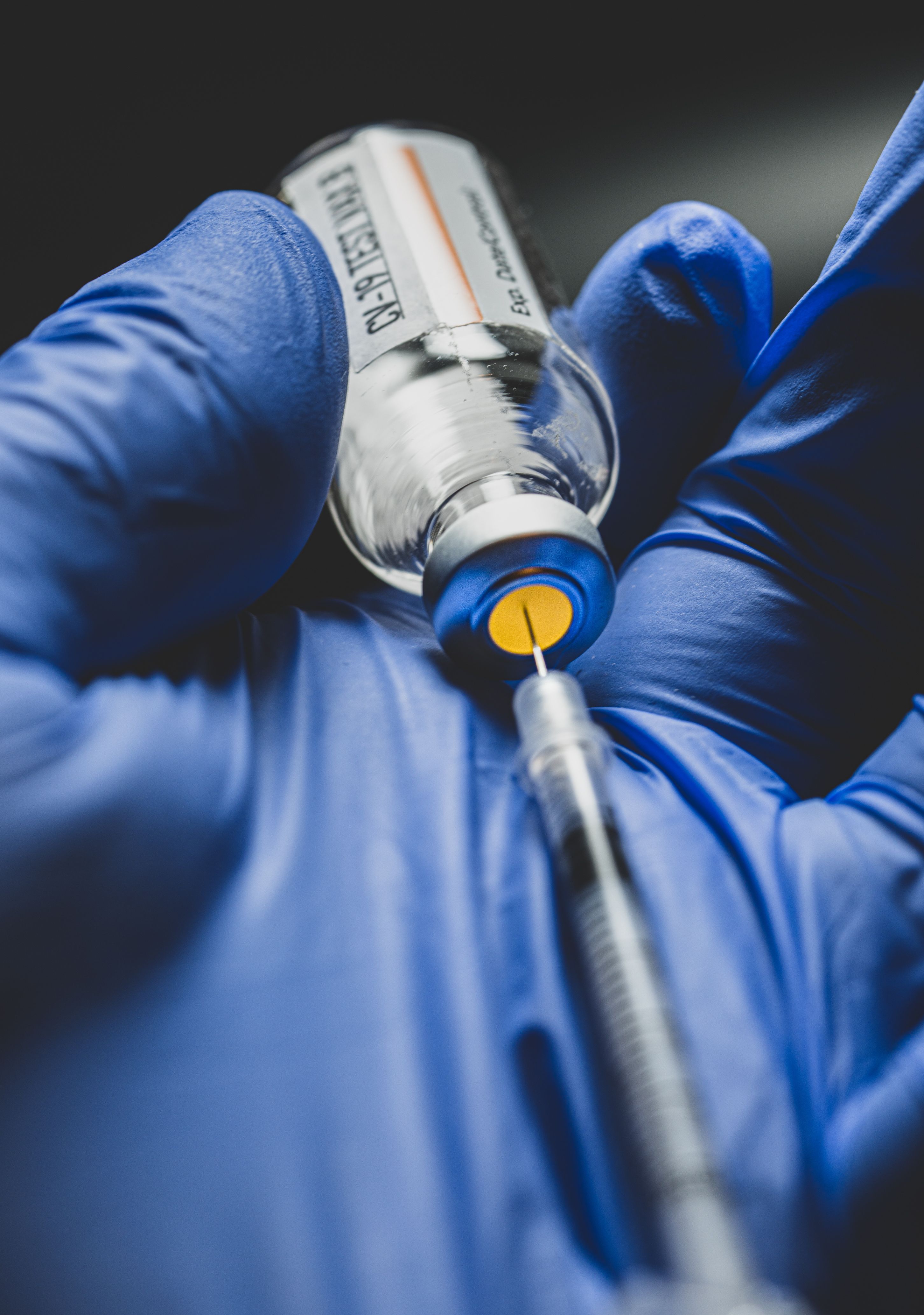IP and Collaboration
Fighting the pandemic with joint projects and IP sharing.

The pharmaceutical industry’s response to the COVID-19 pandemic has seen unprecedented collaboration to develop effective treatments and vaccines on an accelerated timeline. Although it remains to be seen whether the unparalleled sharing of IP and cooperation within pharma will continue after the pandemic is brought under control, there have been many lessons learned that can be applied in dealing with future global health emergencies.

Collaboration in pharma
Prior to COVID, pharmaceutical companies occasionally collaborated to develop vaccines and therapeutics—typically between a pharma giant and a smaller biotechnology firm. These were often drawn-out collaborations to address neglected diseases or isolated efforts to develop a specific drug product. Since the industry’s pivot to developing therapies for COVID, companies that are typically competitors have partnered on an unprecedented scale to respond to the pandemic.1 The defining factor governing these collaborations has been what each company can bring to the partnership to speed up the laborious development and manufacturing process.
One notable example of such collaboration is the Pfizer/BioNTech vaccine. BioNTech primarily managed the R&D of this vaccine; Pfizer primarily provided significant clinical trial experience; and Sanofi agreed to manufacture approximately 125 million doses of the vaccine for the EU.2 BioNTech’s partnership with Sanofi came as a particular surprise because it marks one of the first times a pharmaceutical company has manufactured its competitor’s product, and Sanofi is even developing its own vaccine in collaboration with GlaxoSmithKline, a regular competitor of Sanofi.3
IP sharing in COVID collaboration

With mixed results, governments and international organizations have attempted to endorse cooperative organizations aimed at consolidating COVID-related IP.4 For example, the World Health Organization created the COVID-19 Technology Access Pool (C-TAP), which was intended as a COVID patent pool, to be donated by pharma companies. Although C-TAP was endorsed by more than 35 primarily low- and middle-income countries, it received lukewarm support from pharma.5 Various countries have also proposed legislation that would deprive owners of IP the rights to COVID-related therapies.6 For example, the Bill for Facilitating Innovation to Fight Coronavirus Act was introduced in the US Senate in May 2020, which would have immunized healthcare providers from civil suits (e.g., claims of patent infringement) for certain actions taken during the pandemic and forestalled any patent protection relating to COVID therapies.7
Despite governmental and international efforts to effectively deprive biopharma manufacturers of IP, the industry has opted to bolster its practice of governing collaborations through contract-based assignments and rights sharing.8 The lines are clearly drawn where companies contribute unique, or previously owned, technologies to a partnership, and where single-application technologies are at issue.9 For example, in partnering with Clover and CEPI, GSK licensed its proprietary adjuvant technology to each.
Negotiations are more difficult where a partnership involves multiple inventions, blending therapies, or inventions having value post-COVID. Such collaborative agreements must carefully define how each partner is permitted to use the specific IP contributed, limitations on use for future invention, and which partner owns the rights to any unexpected discoveries during R&D or for future applications of these technologies to non-COVID uses.
The future of collaboration
Beyond COVID-driven partnerships in R&D and manufacturing, companies that existed prior to, and were created as a result of, the virus, are playing central roles in ensuring equitable global access to COVID therapies. For example, GAVI and CEPI partnered to form the COVAX Facility, endorsed by more than 170 countries and the majority of the pharma industry. It “pools together the purchasing power of wealthier nations to secure a portfolio of viable vaccines and simultaneously coordinates worldwide efforts to manufacture, stockpile, distribute, and deliver them.”10
Despite competing feelings about the longevity of these collaborations11, drug manufacturers have been forced to negotiate mutually beneficial contracts at a record pace. Given the learned efficiencies in clearly defining each partner’s contributions to, and role in, the partnership, as well as the dilution of risk and cost, gained from these partnerships, it is possible that companies will be more open to continuing this in the future.
References
- See, e.g., https://www.abpi.org.uk/medicine-discovery/covid-19/what-are-pharmaceutical-companies-doing-to-tackle-the-disease/.
- https://www.sanofi.com/en/media-room/press-releases/2021/2021-01-27-07-30-00.
- https://www.bloomberg.com/news/articles/2021-01-27/sanofi-to-make-millions-of-biontech-pfizer-s-covid-vaccine-doses?cmpid=BBD012721_CORONAVIRUS&utm_medium=email&utm_source=newsletter&utm_term=210127&utm_campaign=coronavirus.
- See, e.g., https://theconversation.com/drug-companies-should-drop-their-patents-and-collaborate-to-fight-coronavirus-135241.
- https://www.bioworld.com/articles/496984-biopharma-opts-for-collaboration-not-patent-pools; https://www.statnews.com/pharmalot/2020/05/28/who-voluntary-pool-patents-pfizer/.
- See, e.g., https://www.natlawreview.com/article/sharing-ip-rights-fight-against-covid-19.
- https://www.congress.gov/bill/116th-congress/senate-bill/3630.
- See, e.g., https://www.ifpma.org/resource-centre/ifpma-statement-on-intellectual-property-and-covid-19/.
- https://news.bloomberglaw.com/pharma-and-life-sciences/pharma-collaborations-in-the-covid-19-era-come-with-legal-risks.
- https://fortune.com/longform/covid-vaccine-big-pharma-drugmakers-coronavirus-pharmaceutical-industry/.
- See, e.g., https://www.managingip.com/article/b1lj6wwyll5r4x/a-strangers-guide-to-pharma-ip-collaboration-during-covid-19; https://insights.som.yale.edu/insights/leading-through-covid-pharma-collaborates-in-the-fight-against-the-pandemic#gref.
Chad A. Landmon, JD, Partner and Chair of Intellectual Property and FDA Practice Groups, Eric D. Dunbar, JD, Associate; both with Axinn, Veltrop & Harkrider, LLP

MDMA Therapy for Mental Health Conditions: Do the Benefits Outweigh the Risks?
October 25th 2024Despite a recent FDA Complete Response Letter issued to Lykos for midomafetamine capsules for the treatment of post-traumatic stress disorder, experts believe that the future is bright for psychedelic drugs that treat mental health conditions.
Securities Litigation Arising from Alzheimer's Drug Treatments
September 25th 2024The legal challenges surrounding Biogen’s Aduhelm and Cassava Sciences’ simufilam underscore the ongoing difficulties in Alzheimer's drug development, leading to securities litigation over allegedly misleading statements about trial results and commercialization efforts.